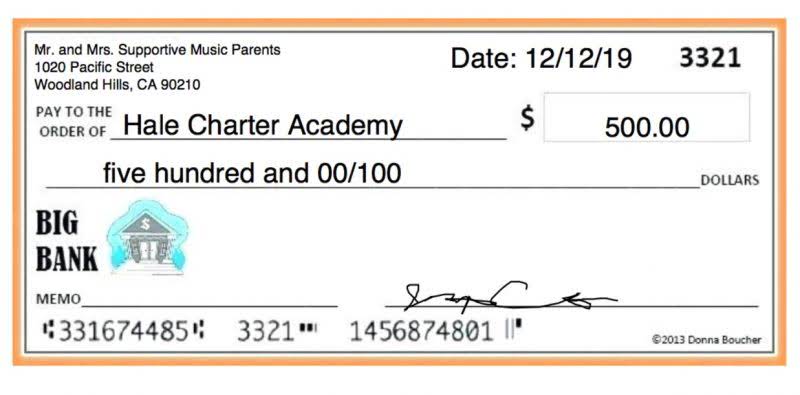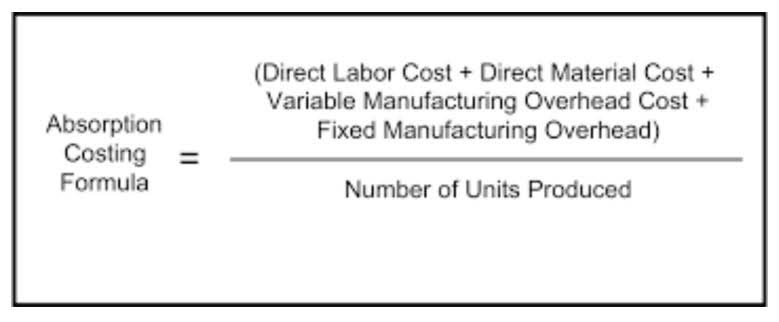Sales Mix : Definition , formula , practices
Once you have those numbers, you can track your progress toward them using a customer relationship management (CRM) tool. Sales mix contribution margins (or “weighted contribution margins”) determine how the company product mix contributes to overall profitability. If Product A has a higher profit margin, you’ll have a positive sales mix variance. If Product A has a lower profit margin, you can get a negative (or unfavorable) sales mix variance.
What is the formula for sales mix?
In this case, your actual sales mix contributed less to the overall profit you planned for. Once we know each product’s profit margin, we can lay out our metrics to calculate your volume and revenue sales mixes. Let’s revisit our bespoke office furniture example over a monthly period. To improve your company’s sales mix, you need to understand sales mix variance. Goodmeetings is an AI-powered platform designed to boost your sales team’s meeting performance.
- Begin by determining which products or services you wish to include in your analysis.
- Ultimately, calculating the sales mix provides valuable insights that can lead to improved decision-making and increased profits for any business.
- For products with lower percentages, evaluate whether price adjustments or cost optimizations are needed.
- Everything remaining same company would have same numbers for the next quarter.
- No matter what decision is made, a clear plan forward lets your company try a new tactic and reevaluate down the line.
Professional Services
Company then counts the number of items it needs to sell to reach that revenue level. Below you can find the measurement method of sales mix contribution margin. Effective business management relies heavily on understanding the intricacies behind your sales figures. One essential method to analyze and optimize sales performance is to determine your sales mix. Sales mix analysis provides insights necessary for strategic decision-making, pricing optimization, and product management. In this article, we will explore what sales mix is and provide a step-by-step guide on how to calculate it.
Customer Insights
Handling multiple product lines can be both favorable and unfavorable at times, depending on the market conditions, customer needs, the economy in the country, etc. Therefore, it needs to be monitored continuously, and it shall be altered from time to time by analyzing the individual product contribution. Using this information, you may try to increase chair sales (with their higher profit potential) or explore ways to reduce variable costs for modular desks to further improve their contribution margin. Tracking what happened in the last period (e.g., month, quarter or custom time) allows you to compare your sales this period to see if you’re on track. If you’re behind on selling Products A and C and it’s already halfway through the period, you need to try some new sales and marketing tactics.
For example, if you sell three products, get the sales amount for each product over a month. If one product’s sales decline, others can help balance the overall revenue, reducing the impact of market changes or seasonal fluctuations. By cross-referencing job persuasion groups with country risk tolerance groups, you can derive a pay mix matrix that aligns sales compensation across global markets.
Continuously monitor your sales mix and be ready to adapt your strategies as needed. Regularly review your sales mix analysis to identify shifts and make informed decisions to maintain profitability. Variance calculation is among the most crucial ones; companies require that measurement to make their future decisions. Contribution margin is the amount a company looks forward to earning from a single product.
Recognizing these patterns allows for better inventory and promotional planning. In this guide, we’ll explain what sales mix is, why it matters, and how you can use it to improve your business performance and increase profits. how to calculate sales mix percentage Pay mix is the ratio between an employee’s fixed salary (base pay) and variable pay (which includes incentives, commissions, or bonuses).
Data Cloud
By analyzing the proportion of each product or service sold, companies can gain valuable insights into their overall performance. A comprehensive understanding of sales mix allows businesses to identify which products or services are driving profits and which may be harming their bottom line. In conclusion, sales mix is an essential metric for businesses as it not only determines revenue generation but also enables companies to optimize their marketing strategies for increased profits. By understanding consumer preferences through analysis of sales mix data, companies can adapt their offerings to meet customer demands more effectively. Ultimately, leveraging this information allows businesses to stay competitive in today’s dynamic marketplace. Calculating sales mix provides valuable insights into customer preferences and market demand.
The formula calculates the percentage of single product revenue from total revenue. Organizations learn about marketing and the performance of strategies through it. This shortfall of 1,200 units illustrates why focusing on profit margin and sales mix percentage alone might not capture the full picture of product performance. The discrepancy reveals the need for a more detailed analysis, which can be addressed with sales mix variance to better align with sales goals. For example, if a store sells both shoes and shirts, the sales mix shows the percentage of total sales each product represents. A strong sales mix means focusing on items with higher profit margins or demand.
Customer relation management tools could help automate the Sales Mix calculation to save time. Calculating is easy; companies could also use online tools for calculation. Reports were gathered to show how the company is performing at different levels. So, read this article till the end to learn about the calculation methods and how managers could easily analyze performance through this measure. Regular calculations are crucial to the stability of business and performance of the seller.
This may work in a vacuum, but it leaves you vulnerable to competitors with more sophisticated price structures. The type of restaurant (fine dining, fast-casual, or quick-service), location, and food costs all play a role. Restaurants with high labor costs or low sales volumes may see a lower ROS, while those that can control food costs and manage labor efficiently tend to have higher returns.
- Regularly review your sales mix analysis to identify shifts and make informed decisions to maintain profitability.
- This not only helps to meet customer needs but also allows for a more efficient allocation of resources, resulting in increased profitability.
- Pay mix is typically expressed as base salary %/ variable pay % as a percentage of an employee’s total on-target earnings (OTE).
- For the Bluetooth speakers, there was an unfavorable variance, meaning the actual cost to produce and sell the Bluetooth speakers was $138.60 greater than the expected cost.
This variance analysis helps the management understand the reasons for deviation from the budgeted sales mix and reconsider their decisions. In addition, it helps to understand the performance of various products concerning sales and profitability and each product’s contribution to the business. Understanding the sales mix can help businesses refine their pricing strategies. By recognizing which products are more price-sensitive, they can adjust prices to maximize both sales volume and profit margins.
Designing the right pay mix is not just a compensation strategy—it’s a tool for attracting top talent, driving performance, and ensuring long-term business success. Factors such as industry benchmarks, role-specific nuances, company maturity, and market risk tolerance play a role. Operational efficiency directly impacts your gross profit by reducing unnecessary expenses while maintaining or improving output quality. You can use process automation for routine tasks to reduce manual labor costs and minimize errors, and optimize your resources through better allocation and scheduling. And move to digital tools to monitor and control costs more effectively. Net profit margin uses the profits after taxes and all other expenses are subtracted, divided by net sales.
Learn how to use the sales revenue formula so you can gauge your company’s continued viability and forecast more accurately. With Zendesk Sell, you can track every aspect of your customer journey and sales pipeline so you know exactly where problems are occurring. You can also create a seamless relationship between sales and marketing, thanks to the robust collaboration and communication tools. No matter what decision is made, a clear plan forward lets your company try a new tactic and reevaluate down the line. With a smart marketing plan, weight sets could move back into a best-seller slot. It’s all about avoiding stagnancy and moving away from decisions that are actively hurting your bottom line.
To succeed at this, you need to have insight into seasonal variations, your customer segments’ behavior, and competitive pricing movements. Sophisticated data analysis and even things like AI for sales can make it easier to operate in a data-driven way. Marketing could actually impact the performance of commodities; marketing is like magic. In our example, jackets were falling behind, so little investment in marketing could improve sales.
Let’s say our speaker company has a goal of selling 750 total units, 500 units of wired speakers, and 250 units of Bluetooth speakers, during a sales period. During this period, the company actually sold 1000 total units, consisting of 700 units of wired speakers and 300 units of Bluetooth speakers. The optimal sales mix maximizes profits by balancing high-margin and high-volume products – aligning with company goals and market demand. Knowing which products sell best allows businesses to manage inventory more effectively. It reduces the risk of overstocking low-demand items, minimizing storage costs, and reducing waste. Return on sales is valuable because it helps zero in on a business’ operational efficiency.
Financial Modeling Guide Excel Training Tutorial
Financial modeling best practices refer to industry-standard modeling conventions and tips to adhere to when building models in Excel. Debt instruments tied to inflation or other indices require specific modelling techniques. Learn the best practices for accurately reflecting indexed debt in financial projections. All you need to do is ask some basic questions and check the outcomes. If they don’t align with something that’s considered general knowledge or common sense, then your model may have a fundamental error you need to fix. Most inaccuracies are a result of copying errors or incomplete data.
Use Accurate Data and Protect Its Integrity
These practices not only help prevent errors but also ensure that models are easy to understand and maintain for both the owner and others who may inherit or work with the model in the future. Adopting these best practices will enhance the reliability and longevity of financial modeling efforts, ultimately contributing to more informed decision-making. By mastering these functions, you can manage dates effectively in your financial models, ensuring your calculations are both accurate and reliable.
This not only enhances the precision of your models but also saves time and reduces the risk of errors. Let’s look at what financial modeling is, why it’s important for your company, types of financial models, how to create a good one, best practices, and more. Financial modeling is critical for business valuation, investment analysis, budgeting, forecasting, financial planning, and all kinds of business decision-making. It helps stakeholders, such as investors, analysts, and managers, understand the potential outcomes of different financial strategies or actions. Financial models are essential for investors, analysts, and businesses to evaluate decision impacts, generate forecasts, and assess various potential scenarios.
It’s not easy to format cells based on whether they are inputs or formulas, but it can be done. While different investment banks have different house styles, blue is typically used to color inputs, and black is used for formulas (or calculations). Just about everyone agrees that color-coding cells based on whether the cell contains a hard-coded number or a formula are critical. Without color coding, it is extremely difficult to visually distinguish between cells that should be modified and cells that should not (i.e. formulas). As a financial model becomes more complex – due to higher granularity and flexibility – the model naturally becomes less transparent.
Set a schedule for reviewing and updating your model to reflect the latest data and assumptions. Automate as much of the process as possible, using tools like macros or scripts that pull in new data automatically. This not only saves time but also reduces the risk of human error.
For a simple 1-page discounted cash flow analysis not intended for frequent reuse, it is preferable to embed inputs throughout the page. That said, despite attempts by IB teams to standardize models, many investment banking models are essentially “one-offs” that get materially modified for each new use. A model often has rows with data and calculations that you do not want to show when the model is printed or when you paste the data into a presentation. In this situation, it’s often tempting to hide rows and columns for a “cleaner” presentation of results. Imagine you’re building a model for a company contemplating bankruptcy. Each phase of the restructuring process has its own distinct borrowing and operating characteristics.
This one’s your best friend when it comes to investment decisions, as it helps you figure out what an asset is truly worth. Using a modular process enables us to create a library of building blocks for future use in other financial models. Dividing the model into these small modules or blocks makes it easier to interpret, print, and present once completed. These should never be commingled with the model’s calculations (i.e. balance sheet schedules, financial statements) or outputs (i.e. credit and financial ratios, charts and summary tables). A properly built financial model will further distinguish between formulas that link to other worksheets and workbooks, as well as cells that link to financial data services, like Capital IQ and FactSet. The financial modeling best practices and practical tips described in the next sections will help fix this, starting with the following guidelines around formatting financial models.
- Also consider using a table of contents with as many guidelines and instructions to help make your model easier for the user to navigate.
- It’s essential to document and clearly communicate all the assumptions and inputs used in any financial model.
- For example, the way to avoid intentional circularities in the example above is to calculate interest expense using the beginning debt balance.
- In this episode of Corporate Finance Explained, we break down the key techniques and best practices in financial modeling—a must-have skill for corporate finance professionals.
In the next section, we’ll illustrate two common methods that users often use to set up sources & uses of funds tables in financial models. Common investment banking analyses like accretion dilution models, LBO models, operating models, and DCF models usually don’t delve into detail beyond the limits of public filings and basic forecasting. In this case, moving back and forth from input to calculation to output tabs is unnecessarily cumbersome. The reduced likelihood of error from easier subtotaling alone makes this our clear choice.
This creates room for error because Excel is dealing with blank values. Formulas like IFERROR (and ISERROR), ISNUMBER, ISTEXT, and ISBLANK are all useful functions for trapping errors, especially in templates. Place error checks close to where the relevant calculation is taking place, but aggregate all error checks into a central easy-to-see “error dashboard” that clearly shows any errors in the model. The only macros regularly tolerated in banking models are print macros. In short, a financial model presented on a single long sheet is preferable over many short sheets. For example, if you’ve inputted a company name in the first worksheet of the model, reference that worksheet name — don’t re-type it into the other worksheets.
Ensure all statements have been integrated
Tax directors, in turn, need to meet increasing demands for tax transparency, comply with new rules, and feed into business insights—often through technology systems that haven’t kept pace with regulatory changes. Adding footnotes and comments is always a good practice to improve clarity and provide additional context inside the model. Merge cells usually lead to complications and reduced flexibility. While if you use Center Across Selection, this will maintain individual cell functionality while visually centering content. It’s advisable to group rows and columns instead of hiding them. If you have more than one person working on the model, make sure that everyone is on the same page when it comes to color coding, labeling, and other formatting choices.
Model Processing
Understanding how to control each individual type of entry in Excel can give you solid control over your formatting. Models that require a lot of flexibility (templates) often contain areas that a user may not need now, but will need down the road. The problem with the second (“plug”) approach is that because of the mis-linking in D50, the model incorrectly calculates the amount of secured loans required for the transaction, and no error is identified. For quarterly and monthly models with minor debt fluctuations, this is desirable, but for an annual model with a large forecasted change in debt, the “fix” can lead to a materially different result.
Financial Modeling Guidelines
You’re more than likely to spit errors you may not have even noticed before. Using too many cell names and range names might have the opposite effect of complicating your formulas as it can make your model overcrowded with way too many labels. It’s always best to use the same formula across rows so that it is easier to follow and interpret. Complex models can become unwieldy monsters that are difficult to manage and even harder to explain. Break down complex calculations into smaller, manageable components.
- Start by identifying the data you need, including key financial statements, then gather it from reliable sources.
- Which is a way to estimatethe present value of future cash flows.
- By only including the components that support the dashboard, we ensure the level of detail throughout the model is appropriate to its end objective.
- One of the primary ways we can instill confidence in a model is by using a well-structured, clean, and professional format.
Discover the essentials of financial modeling, including fundamental techniques, best practices, and the critical tools used by professionals. Learn how financial models help in decision-making, forecasting, and risk assessment to make informed investment and business strategies. To summarise, these are all some of the most commonly adopted practices in building a financial model. Regardless of what e-commerce business you run, following a set of tried and tested financial modeling guidelines can ensure your model functions just the way it’s designed to.
Start by Building a Model That Is Simple and Easy To Understand
Leaving parts of the update incomplete can lead to errors being created in the model. These guidelines will resonate with individuals building their own models, as well as corporations and other organizations. Larger institutions may welcome more consistency and standardization in the models they use across their teams, mitigating the risk of human error. While not every suggestion in the guidelines will be appropriate for every user or organization, they can serve as catalysts to stimulate important discussions. Virtually all investment banking models rely on forecasting and assumptions to arrive at the outputs presented to clients.
Use financial modeling best practices clear and concise labels for your formulas and keep non-essential features to a minimum. Remember, a model should be as complex as necessary, but no more. Navigating the world of financial modeling isn’t always smooth sailing. Even the most seasoned analysts face hurdles that can trip up the best-laid plans.
Building a financial model from scratch can be pretty daunting, especially if you’ve never done it before. With a good grasp of some of the best practices and tips to follow, you can have a reasonably good model in no time. Communicating your model’s findings to stakeholders who might not speak the language of finance can be tricky.
11 Employee Behaviors That Are Worthy of Recognition
Once your referral program gets going, you’ll be surprised how many potential leads you get and what a great way this is to find employees. To reach even more customers (and find more potential employees), you can also ask for referrals from all customers who walk into your business. While you’re there, find out whether they host a career fair and what it takes to attend. Career fairs are the perfect opportunity to meet high-potential employees and conduct impromptu interviews for your business. More specifically, review, revise, and perfect your job descriptions before you start actively searching for new team members.
Creative Sourcing Strategies to Attract Passive Candidates
The New York Times’ Adam Bryant suggests getting away from the standard job interview entirely. Reject the played-out choreography — the conference room, the resume, the “Where do you want to be in five years? Instead, get up and move about to observe how they behave in (and out of) the workplace wild.
Schedule a short phone interview.
With an employee scheduling app, employee schedule maker, and work schedule app, Homebase is built for staff scheduling, shift swapping, predictive scheduling, auto scheduling, rotating schedules. Check out our shift schedule template, employee schedule template, schedule planner, and weekly schedule template. Homebase works great for all hourly teams, including restaurants, retail, healthcare, home and repair, and professional services businesses. The simplest way to find employees fast is to have a list of qualified candidates who previously reached out looking for work or applied for a position in the past. Keeping track of these individuals can help save a lot of time and money down the road.
- Job boards and recruiting agencies (or talent acquisition firms) are ways to reach a broader pool of candidates but don’t jump on them automatically.
- Once you identify one or more of those traits in an individual, you’ll start to see how (and if) they fit into your existing team, your culture, and your business as a whole.
- Around 41% of companies in Canada are struggling to hire employees following the Covid-19 pandemic.
- A professional association is an organization that connects like-minded professionals working in a similar field or industry.
- New ideas that fall outside the usual scope of operations are often what allow companies to innovate.
By having clear expectations, you can guide your employees while recognizing those with the most potential. Employees with a strong willingness to learn are generally more engaged with their employer when encouraged to develop their knowledge and skills. An employee stays with a company for many years, despite challenges. They defend their employer against criticism and work hard to help the company achieve its goals. Employees with strong problem-solving how to find good employees abilities often have greater experience and industry knowledge, allowing them to address challenges effectively. Collaboration refers to the ability to work effectively in a team and step in to help when needed.
On the Company Website
If you can’t do that, try hiring contract employees to do some of the work until you get an idea of what success looks like for the job. Also, learn as much as you can from people you interview about who they respect in the field and why. When you hire an intern, you already know their quality of work, potential, personality, and ability to fit in with your team, so internships may minimize recruitment costs in the long run. Whether you are looking to hire your first employee or expand your staff numbers, there are a few things to consider before you get started. As well as ensuring you attract and hire the right candidates, you also need to make sure you comply with state and federal employment laws. When the time is tight, it’s worth taking a look at past candidates that you’ve already interviewed and evaluated.
Establish an internship program.
There are a few things that grab job seekers’ attention, irrespective of the field they work in. They are more effective than their unstructured, intuitive counterparts. To structure an interview effectively, hiring managers and recruiters draft a list of job-related skills and craft specific questions to measure each of those skills.
Ready for September’s hiring surge? Recruit better and faster
- Not everyone starts a business knowing how to hire employees—many of us have to learn along the way.
- If you hire a new employee or rehire a former employee, you are responsible for reporting your new hire to the state.
- From general platforms like Indeed and LinkedIn to industry-specific sites, posting your openings where job seekers are already searching increases your chances of finding candidates quickly and efficiently.
- Get the details of these prospective candidates and set up interviews.
- However, keep in mind that Indeed is a general site that doesn’t specialize in any specific industry, so it’s not a good idea to count on their platform alone to source your candidates.
It involves building an audience and making sure people are paying attention to you. There is typically also a paid option but that doesn’t fully unlock the power of hiring on social media. Having and promoting DEI policies isn’t just great for ticking HR boxes and staying compliant with the law. Companies that stress diversity and inclusion as a part of their company culture are recognized as more welcoming and supportive of different types of candidates.
For more instruction on how to recruit employees by following a structured interview process, here’s our tutorial and ebook. There are a number of ways to find employees—job boards, local advertising, networking, and referrals. If you are looking for hourly staff to work in your office, post a Help Wanted sign. If you are looking for remote workers, then post on a job board, like ZipRecruiter.
How, when and why do you prepare closing entries?
Streamline your month-end close with essential steps and best practices to enhance accuracy and efficiency. Download our data sheet to learn how you can manage complex vendor and customer rebates and commission reporting at scale. In addition to standardization, Financial Cents enables effective task delegation. Within each workflow, you can assign specific tasks to team members, set due dates, and monitor progress in real time.
- As mentioned, one way to make closing entries is by directly closing the temporary balances to the equity or retained earnings account.
- It begins with aggregating all financial transactions recorded during the period, ensuring the ledger is up-to-date.
- We see from the adjusted trial balance that our revenue accounts have a credit balance.
- Calculate and post depreciation entries based on your company’s depreciation policy.
- The purpose of the income summary is to show the net income (revenue less expenses) of the business in more detail before it becomes part of the retained earnings account balance.
- Now for this step, we need to get the balance of the Income Summary account.
Example of Closing Entries
With the right tools and methods, the month-end financial close process can be transformed from a time-consuming and cumbersome task to a streamlined one. Now, it’s time to close the income summary to the retained earnings (since we’re dealing with a company, not a small business or sole proprietorship). Remember that all revenue, sales, income, and gain accounts are closed in this entry. Now for this step, we need to get the balance of the Income Summary account. In step 1, we credited it for $9,850 and debited it in step 2 for $8,790. Any account listed on the balance sheet is a permanent account, barring paid dividends.
Intelligent Regulatory Reporting Solution
Their balances carry into future periods, providing a continuous record of a company’s financial position. For example, the balance in a cash account at the end of one period becomes the starting balance in the next. This continuity is essential for assessing trends and making informed decisions about investments, financing, and operations. Closing entries, on the other hand, invoice template for google docs are entries that close temporary ledger accounts and transfer their balances to permanent accounts. As mentioned, one way to make closing entries is by directly closing the temporary balances to the equity or retained earnings account.
Step1: Gather statements and finalize transactions
The accounting month-end close is a structured financial procedure that finalises and validates all your business’s financial transactions for the preceding month. This process creates a clear cutoff point, ensuring that all revenue, expenses, assets, and liabilities are accurately recorded for the period, resulting in accurate financial data. This process typically includes reconciling bank statements, verifying account balances, reviewing revenue and expenses, and preparing financial statements.
Once this has been completed, a post-closing trial balance will be reviewed to ensure accuracy. At the end of a financial period, businesses will go through the process of detailing their revenue and expenses. As the drawings account is a contra equity account and not an expense account, it is closed to the capital account and not the income summary or retained earnings account. After the closing journal entry, the balance on the dividend account is zero, and the retained earnings account has been reduced by 200. All expense accounts are then closed to the income summary account by crediting the expense accounts and debiting income summary. In this example we will close Paul’s Guitar Shop, Inc.’s temporary accounts using the income summary account method from his financial statements in the previous example.
Closing Entries
For instance, if a company has $100,000 in revenue, this amount is debited from the revenue account and credited to the income summary account. Closing entries are journal entries made at the end of an accounting period, that transfer temporary account balances into a permanent account. The accounting department plays a vital role in the month-end close process. They are responsible for collecting, reviewing, and reconciling financial data, preparing financial statements, and analyzing performance.
To close the drawing account to the capital account, we credit the drawing account and debit the capital account. To close expenses, we simply credit the expense accounts and debit Income Summary. To close that, we debit Service Revenue for the full amount and credit Income Summary for the same. Temporary accounts include all revenue and expense accounts, and also withdrawal accounts of owner/s in the case of sole proprietorships and partnerships (dividends for corporations).
- Some reconciliations might be thorough, while others are rushed or missed altogether.
- It ensures accuracy, saves time, and allows your team to handle the close efficiently without unnecessary back-and-forth.
- In just a few clicks, the entire financial year closing is streamlined for you.
- On the statement of retained earnings, we reported the ending balance of retained earnings to be $15,190.
- Errors here can affect the equity section of the balance sheet, complicating future financial analysis.
- This is because the financial close process requires meticulous attention to detail.
Automate Recurring/Repetitive Tasks
For instance, improperly closed revenue accounts can lead to overstated income figures, misleading investors and inviting regulatory scrutiny. This is particularly critical for publicly traded companies, which must comply with stringent reporting rules set by regulatory bodies like the SEC. When making closing entries, the revenue, expense, and dividend account balances are moved to the retained earnings permanent account. If you own a sole proprietorship, you have to close temporary accounts to the owner’s equity instead of retained earnings. Now that all the temporary accounts are closed, the income summary account should have a balance equal to the net income shown on Paul’s income statement. Now Paul must close the income summary account to retained earnings in the next step of the closing entries.
For predetermined overhead rate the past 52 years, Harold Averkamp (CPA, MBA) has worked as an accounting supervisor, manager, consultant, university instructor, and innovator in teaching accounting online.
Let’s move on to learn about how to record closing those temporary accounts. Since the income summary account is only a transitional account, it is also acceptable to close directly to the retained earnings account and bypass the income summary account entirely. The net result of these activities is to move the net profit or net loss for the period into the retained earnings account, which appears in the stockholders’ equity section of the balance sheet. In order to produce more timely information some businesses issue financial statements for periods shorter than a full fiscal or calendar year.
Close Dividends to Retained Earnings
A well-structured month-end close helps businesses track performance, make informed decisions, and comply with tax and regulatory requirements. At the end of an accounting period when the books of accounts are at finalization stage, some special journal entries are required to be passed. In accounting terms, these journal entries are termed as closing entries. The main purpose of these closing entries is to bring the temporary journal account balances to zero for the next accounting period, which keeps the accounts reconciled.
Posting of the Closing Entries
This centralization eliminates the data silos that often plague finance departments and creates a single source of truth for all financial information. Begin by ensuring all financial transactions for the month are captured in your system. This includes accounts receivable, accounts payable, cash receipts, and disbursements. Verify that all revenue has been properly recognized and all expenses have been recorded according to accounting policies. This foundational step ensures you’re working with complete data throughout the close process.
Accounts are considered “temporary” when they only accumulate transactions over one single accounting period. Temporary accounts are closed or zero-ed out so that their balances don’t get mixed up with those of the next year. Temporary accounts can either be closed directly to the retained earnings account or to an intermediate account called the income summary account.
Your month-end close checklist should detail every task, who’s responsible, and creditor definition when it should be completed. While similar to year-end closing, the month-end close serves as a more frequent health check for your business. For each project created in Financial Cents, there’s a comments tab that facilitates real-time communication among staff.
The closing process is a systematic approach that transitions financial data from one period to the next. It begins with aggregating all financial transactions recorded during the period, ensuring the ledger is up-to-date. Once verified, the trial balance is prepared to confirm that debits and credits are balanced, highlighting any discrepancies that need resolution. Failing to make a closing entry, or avoiding the closing process altogether, can cause a misreporting of the current period’s retained earnings.
Discounted Payback Period Formula with Calculator
The quicker a company can recoup its initial investment, the less exposure the company has to a potential loss on the endeavor. The payback period is a method commonly used by investors, financial professionals, and corporations to calculate investment returns. Option 1 has a discounted payback period of5.07 years, option 3 of 4.65 years while with option 2, a recovery of theinvestment is not achieved.
Understanding the Discounted Payback Period
Management then looks at a variety of metrics in order to obtain complete information. Comparing various profitability metrics for all hollywood accounting projects is important when making a well-informed decision. This means that you would need to earn a return of at least 9.1% on your investment to break even.
Discounted Payback Period (DPP) Calculator
The discounted payback period is a modified version of the payback period that accounts for the time value of money. Both metrics are used to calculate the amount of time that it will take for a project to “break even,” or to get the point where the net cash flows generated cover the initial cost of the project. Both the payback period and the discounted payback period can be used to evaluate the profitability and feasibility of a specific project. Payback period doesn’t take into account money’s time value or cash flows beyond payback period. The calculationtherefore requires the discounting of the cash flows using an interest ordiscount rate.
Discounted Payback Period Calculator
- It can be calculated by dividing the initial investment cost by the annual net cash flow generated by that investment.
- In other words, the investment will not be recoveredwithin the time horizon of this projection.
- The main advantage is that the metric takes into account money’s time value.
- The DPP can be used in a cost-benefit analysis as well as for the comparison of different project alternatives.
There can be lots of strategies to use, so it can often be difficult to know where to start. But aside from a strategy, there are other scenarios you can leverage. Suppose a company is considering whether to approve or reject a proposed project.
As you can see, the required rate of return is lower for the second project. If undertaken, the initial investment in the project will cost the company approximately $20 million. Join over 2 million professionals who advanced their finance careers with 365. Learn from instructors who have worked at Morgan Stanley, HSBC, PwC, and Coca-Cola and master accounting, financial analysis, investment banking, financial modeling, and more. Others like to use it as an additional point of reference in a capital budgeting decision framework.
However, one common criticism of the simple payback period metric is that the time value of money is neglected. The Discounted Payback Period estimates the time needed for a project to generate enough cash flows to break even and become profitable. It also turns the most obvious drawback of the Payback Period technique (excluding the time value of money) into an advantage, as it discounts the cash flows, making it economically sound.
As presented below, in our calculation of the Discounted Payback Period, we discount the initial cash flows (originally found in column C) in column H. Assume Company A invests $1 million in a project that is expected to save the company $250,000 each year. If we divide $1 million by $250,000, we arrive at a payback period of four years for this investment. The payback period is the amount of time it takes to recover the cost of an investment. Simply put, it is the length of time an investment reaches a breakeven point. In any case, the decision for a project option or an investment decision should not be based on a single type of indicator.
In other words, the investment will not be recoveredwithin the time horizon of this projection. In a way, the Discounted Payback Period is consistent with the Net Present Value calculation in relying on a discount rate to evaluate a project. In reality, if a project returns a negative Net Present Value, six strategies for fraud prevention in your business it is highly unlikely for it to have a discounted payback time. Unlike the NPV, DPBP is not a yes/no tool for accepting a project; rather, it is a tool to rank projects and to measure the payback time. As the equation above shows, the payback period calculation is a simple one.
Corporations and business managers also use the payback period to evaluate the relative favorability of potential projects in conjunction with tools like IRR or NPV. The payback period is the amount of time it takes to break even on an investment. The appropriate timeframe for an investment will vary depending on the type of project or investment and the expectations of those undertaking it. A higher payback period means it will take longer for a company to cover its initial investment. All else being equal, it’s usually better for a company to have a lower payback period as this typically represents a less risky investment.
For example, if solar panels cost $5,000 to install and the savings are $100 each month, it would take 4.2 years to reach the payback period. So, the two parts of the calculation (the cash flow and PV factor) are shown above.We can conclude from this that the DCF is the calculation of the PV factor and the actual cash inflow. Discounted payback period process is a helpful metric to assess whether or not an investment is worth pursuing. Another advantage of this method is that it’s easy to calculate and understand. This makes it a good choice for decision-makers who don’t have a lot of experience with financial analysis. All of the necessary inputs for our payback period calculation are shown below.
The project is expected to return $1,000 each period for the next five periods, and the appropriate discount rate is 4%. The discounted payback period calculation begins with the -$3,000 cash outlay in the starting period. The discounted payback period has a similar purpose as the payback period which is to determine how long it takes until an initial investment is amortized through the cash flows generated by this asset.
Discounted payback period calculation is a simple way to analyze an investment. One limitation is that it doesn’t take into account money’s time value. This means that it doesn’t consider that money today is worth more than money in the future. In capital budgeting, the payback period is defined as the amount of time necessary for a company to recoup the cost of an initial investment using the cash flows generated by an investment. The basic method of the discounted payback period is taking the future estimated cash flows of a project and discounting them to the present value. This is compared to the initial outlay of capital for the investment.
It uses the predicted returns from the investment, but also takes into consideration the diminishing value of future returns. These two calculations, although similar, may not return the same result due to the discounting of cash flows. For example, projects with higher cash flows toward the end of a project’s life will experience greater discounting due to compound interest.
What is R2R Process? Guide to Record to Report Process Steps and Workflow

The process encompasses data collection, general ledger maintenance, account reconciliation, and more. High-quality data forms the foundation for reliable financial reporting and analysis. However, the company can streamline its financial operations with a well-designed process.
- The R2R process serves as this crucial link, enabling businesses to maintain financial integrity while supporting strategic growth initiatives.
- This arms the upper management of companies with the right information to tackle challenges that plagues their business.
- These experts better understand the company after checking the data for completeness and accuracy.
- Aside from facilitation also, organizations have to be able to comply with policies such as GAAP, IFRS, and other domestic requirements, which means, they have to be undergoing changes regularly.
- By simplifying data collection and reporting, R2R ensures that key stakeholders have the right information to drive growth, even when data is spread across different systems and locations.
- The business must now figure out the amount of consideration it expects to receive in return of the goods or service transferred, as per the contract.
- It aggregates existing collection methods to display performance reports prepared for management.
Account Reconciliation
When the processing of information is done by people, mistakes tend to occur so as to distort the quality of information on the finances of an organization. FinnOps can automate all SOP-driven processes, including MIS, Reconciliation, Data validation, and transformation. The platform implements industry-leading security practices and uses a proprietary algorithm that ensures data is never exposed to external AI engines.
Effective Data Integration

Technology IntegrationImplementing and record to report process steps integrating new technologies can be challenging, especially for organizations with outdated systems. It presents a review of the status of overall goals and actual performance in relation to the market, which strategists require. R2R reveals anomalies and performance variation analysis, another business planning requirement. Firms can gain a competitive edge and become competent, agile, and coordinated through superior management procedures. Shak Akhtar, General Manager of Finance Automation at Redwood Software, possesses extensive experience in finance and IT.
Solutions
Advancements in technology and evolving business needs drive future trends in the process. Some key trends include increased cash flow automation and artificial intelligence (AI) adoption. Cloud-based solutions are also becoming more prevalent as they provide scalability and accessibility. Advanced analytics and data visualization tools help gain deeper insights from financial data. Beyond compliance, R2R provides valuable analytical insights that help improve financial performance and guide strategic decision-making.
A culture of improvement ensures the process remains adaptable and aligned with evolving business needs. Advanced software solutions streamline tedious activities like data entry and reconciliation. It also frees up valuable time for finance professionals to focus Retail Accounting on value-added activities. The laborious task of compiling accurate reports consumes valuable time and increases the risk of errors. The record to report (R2R process) concept has transformed how accounting departments manage financial procedures.
- Record to Report is important because it helps businesses understand their financial position.
- Company and customer must also recognize each other’s rights regarding the goods or services.
- Do you want to send safer payments, eliminate manual processes, and give your payees a choice in how they get paid?
- Any necessary adjustments are made to prepare final financial statements, making sure everything is recorded and resolved properly.
- Through this process, the company can evaluate its financial performance in a given period and based on this to decide how to act.
These technologies can process large volumes of financial data and provide valuable insights for decision-making. Establish performance metrics and conduct regular reviews to assess the effectiveness of the process. Monitor key performance indicators, like process cycle time and reconciliation completeness. The cloud allows your organization to access and store financial data securely.

Company Overview
Record to Report is not used for processing transactions, but rather the aggregation of existing computer systems collection to display performance reports prepared for management. Audit – It’s challenging to audit companies with diverse types of operations and operations in multiple countries. R2R practices help maintain well-organised financial and accounting records that facilitate internal and external audits as well.

Understanding the record-to-report process steps: Streamlining financial reporting for informed decision-making
- It ensures accurate financial records and compliance with regulatory requirements.
- The platform implements industry-leading security practices and uses a proprietary algorithm that ensures data is never exposed to external AI engines.
- FinnOps can handle all types of reconciliations including bank account, sales, inventory, order to cash, job costing, taxes, and inter-company reconciliations.
- These reports help show clearly how the business is doing financially and are shared with managers, stakeholders, or regulators.
- Indeed, ASC 606 is for any business that sells a product, service or subscription.
Streamline your account reconciliation and compliance processes with Redwood’s industry-leading finance solutions. Automation also supports the integration of data across various systems and platforms, enhancing the efficiency of data collection, validation and reconciliation processes. ASC 606 simplifies revenue recognition with a clear five-step framework, helping businesses stay compliant and transparent in financial reporting. This involves reconciling accounts and comparing the records with bank statements, invoices, or other documents to fix any discrepancies. Once the data has been prepared, it is used to generate financial documents, such as income statements, balance sheets, and accounting books.
Ten Key Management & Bookkeeping Services Portland, Oregon’s Premier Management & Bookkeeping Services Firm

Working with Sommer & Sommer LLC is your next step when it comes to protecting the financial integrity of your business. Join over 35,000 US-based business owners who have streamlined their finances and have grown their businesses with Bench. Say goodbye to piles of paperwork and time-consuming manual tracking—we automate inputs directly from linked accounts. Get insights from one central dashboard so you can easily understand the health of your business and make strategic decisions. Each month, your bookkeeper organizes your business transactions and prepares financial statements. Not sure where to start or which accounting service fits your needs?
Personalized Service
She has been in the financial sector for over two decades and has focused on non-profit industries for the last five years. Her free time is spent volunteering for animal rescue organizations. Consolidated Business Solutions is a Portland Oregon premier accounting firm, offering bookkeeping and payroll services. With over 25 years of experience, we help business owners understand and implement the needed actions to help their businesses operate with optimal financial efficiency. A+ Bookkeeping & Payroll Services is a West Linn bookkeeping firm.
Expertise.com

Since day one, we’ve grown alongside clients like you, lessening the financial burdens of managing a business. It’s our mission to handle the accounting logistics so you can focus on what you do best — ensuring your business thrives. Our work allows our clients to feel confident, knowledgeable, and a step ahead of their competitors.
Simple, straightforward pricing for everything your business needs.

Our platform allows you to automate data inputs from most major providers to avoid common mistakes. We partner with merchants like Gusto, Stripe, Shopify, and Square—so your finances are always accurate. One on one consulting solutions to get the results your business needs. We’re thrilled to have helped so many local businesses grow and succeed. Consulting with your tax professional to ensure your goals are met, efficiently and economically.

Its other services include financial statement analysis and payroll management. James Keep & Company serves individuals and small businesses in Portland. The family-operated company offers bookkeeping, tax preparation and planning, timekeeping, and payroll processing. portland bookkeeping Its bookkeeping service includes balance sheet and general ledger reporting, monthly operating write-ups, and checking account reconciliation. Its services are tailored to suit the client’s needs and help achieve their goals, from expanding the business to buying a new home for the family. James Keep is a licensed Oregon state tax consultant and enrolled agent.
- We have happy customers because we deliver stellar customer service.
- We bring together the power of advanced, intuitive software with the expertise of real, human bookkeepers.
- It assists clients in catching up on past reports and preparing for taxes.
- Learn more about Bench, our mission, and the dedicated team behind your financial success.
- Its team members prepare financial statements, reconcile invoices and payments, and categorize transactions.
- They keep our accounts in tip top shape all year round and make our CPA’s job pretty easy.
Payroll Services
Our team offers accurate bookkeeping, detailed financial reporting, bill bay, payroll management, and tax preparation, ensuring your small business runs efficiently. Bench is proud to offer bookkeeping services to businesses across the United States. We are here to help you streamline your accounting needs efficiently and effectively.

We understand the landscape of these industries and are keenly aware of the local laws and tax requirements that can affect them. This includes specific knowledge about Portland’s Business License Tax and the Multnomah County Business bookkeeping Income Tax. We bring together the power of advanced, intuitive software with the expertise of real, human bookkeepers. This gives small business owners in Portland a truly convenient and efficient way to manage their finances.
- Get insights from one central dashboard so you can easily understand the health of your business and make strategic decisions.
- Through precise recording and organization of your company’s financial information, we always guarantee accurate statements.
- PDX Bookkeeping and Tax LLC is a full financial service company that serves clients in Portland.
- Working with Sommer & Sommer LLC is your next step when it comes to protecting the financial integrity of your business.
Experienced team of accountants
- The business also has a second CPA, Jae Ann Atwood, who carries over 25 years of experience working in the firm.
- You are not just a number to us While our expertise is numbers, we know that every business is unique and no one wants to feel like just a number.
- Benchmark Bookkeeping offers services backed by more than 20 years of business experience across various industries.
- Bookkeeping and consulting services that are customized to enhance your financial strategy and minimize operational burden.
Located in Portland, Dragonfly Tax LLC is a locally owned company that offers bookkeeping and accounting services to individuals and businesses. The company also accommodates walk-in, drop-off, and internet services. Clients may choose to work with the firm on a quarterly, monthly, or yearly basis.
- By not knowing, you’re running the risk of losing everything you’ve worked so hard to create.
- You’ll always have the human support you need, and a mobile friendly platform to access your up-to-date financials.
- We partner with merchants like Gusto, Stripe, Shopify, and Square—so your finances are always accurate.
- The company also accommodates walk-in, drop-off, and internet services.
- We take care of your bookkeeping, leaving you free to focus on running and growing your business.
- This gives small business owners in Portland a truly convenient and efficient way to manage their finances.
Gabe G. Small Business Owner
It provides bookkeeping and write-up services, as well as input and planning help to the client’s accounting and financial systems. The company also assists in accounting software and HVAC Bookkeeping business entity selection, business consultation, financial analysis and statements preparation, and tax services. Additionally, the team can set up Quickbooks or handle monthly receipts and payments before filing individual or business tax returns before the end of the year. Dimov Tax Specialists works with businesses in Portland and its surrounding communities, providing them with a wide array of bookkeeping services. Its team members prepare financial statements, reconcile invoices and payments, and categorize transactions.
Petroleum Accounting: Principles, Procedures and Issues 8th edition: PwC

Although the line items are not required, often companies will invest the time and research into adding them. It is especially true of smaller companies looking to prove their commercial viability in the hopes of merging or being acquired. In addition, as the price of oil increases, each barrel that’s produced becomes incrementally more profitable for the oil company. While it’s a more direct play on oil prices, it still won’t perfectly track WTI, and you won’t receive dividend income like you will with so many of the other energy ETFs on this list.
Oil Prices Plunge on OPEC+ Production Cut Speculation
- But if you’re looking to defray a little geographic risk, this is one of the best energy ETFs to do so while still printing a nice profit from higher global commodity prices.
- More than 60% of this comes from just four companies, out of thousands of producers of oil and gas around the world today.
- Oil and gas returns varied greatly over time compared with more consistent returns for clean energy projects.
- Oil and gas accounting is fundamental to the industry’s efficient operation, regulatory compliance, and strategic decision-making.
- These requirements vary widely from state to state, and it’s important to have a system that can support these requirements and make compliance a breeze.
- Finally, identifying and assessing the derivative fair value items that may be present on the company balance sheets can give an idea as to how hedged the company’s position may be.
Those challenges may include, among others, work stoppages, restrictions and/or regulations, supply chain disruptions, decreased commodity pricing, shut-in production, and reduced demand. To determine the effect of these challenges on the business, management may need to invest significant effort to prepare supportable future cash flow projections for the https://www.bookstime.com/blog/mental-health-billing next 12 months that will be utilized in going concern evaluations. This may result in increased judgments by management and corresponding increases in skepticism from auditors with respect to going concern evaluations. Not all oil and gas companies have to diversify into clean energy, but the alternative is to wind down traditional operations over time.

Technical Trading Signals
The more you can think outside the box to challenge the status quo, the more efficiencies you’ll gain in the long term. Effective mineral management is the cornerstone of maximizing returns from your mineral assets. With the right tools and strategies, you can unlock hidden revenue, streamline your operations and gain a comprehensive understanding of your asset portfolio. EnergyLink software provides secure and convenient online access to oil and gas owner statements and account information — available 24/7. When faced with uncertainty, accountants should choose methods that are less likely to overstate assets and income. Financial statements should include all necessary information to ensure that users can make informed decisions.

Midstream Accounting
- Proved reserves, probable reserves, and possible reserves refer to the potential crude oil that can be extracted by an oil and gas company.
- Proper accounting practices build trust among investors, regulators, and the public, fostering confidence in the industry.
- Another way to invest in oil is to own the businesses that produce it, and oil exploration and production (E&P) companies can offer you multiple ways to win when oil rises.
- Combine digital source-to-pay with Enverus joint venture services and solutions to do more with less and improve spend management across your supply chain, freeing up internal cash flow.
- Prices and output are generally lower and the risk of stranded assets is higher, especially in the midstream sector that includes refineries and facilities for liquefied natural gas.
Late last month, the DOE awarded its first tranches of funding for Phase 1 of the H2Hubs initiative, designed to reduce project planning costs. ARCHES, ARCH2 and PNWH2 received up to $90 million collectively, cutting their Phase 1 costs by 20%…. Typically, there is a correlation between the amount of G&A spent and the amount of attainable detail.
Latest Energy News
Investment in existing and some new fields is necessary in a world that achieves national energy and climate pledges, although there is no need in aggregate for new exploration. In a scenario that hits global net zero emissions by 2050, declines in demand are sufficiently steep that no new long lead-time conventional oil and gas projects are required. In 2040, more than 7 million barrels per day of oil production is pushed out of operation before the end of its technical lifetime in a 1.5 °C scenario. The ability to represent a landowner in mineral rights leasing and transactions for facilities that support natural gas development involves more than an understanding of general real estate and contract law. Investors have a variety of ways to play the price of oil depending on exactly the kind of upside and downside they want.
- But do consider consulting your tax adviser when deciding how to invest in MLPs.
- For the moment, only around 2% of offshore wind capacity in operation was developed by oil and gas companies.
- Alongside writing and editing, Marko works on projects related to online technology and digital marketing.
- Arm yourself with the knowledge to inform strategic decisions and grow your business with one source for insights across oil and gas, renewables, carbon capture and ESG.
- It is based on geological and engineering data and must also take into account operating methods, economic conditions, and government regulations.
- “Global” is the keyword here – it means the fund includes both domestic and international stocks.
Continue to Enverus
Many producers are also heavily exposed to risks from a changing climate, which stand to further disrupt the security of energy supply. The distribution of future supply among producers will depend on the weight assigned to lowering costs, ensuring diversity of supply, reducing emissions, and fostering economic development. Market forces naturally favour the lowest-cost production, but oil and gas account that leads to a high concentration in supply among today’s major resource holders, notably in the Middle East. Prioritising the least emissions-intensive sources drives progress towards climate goals, but this often favours low-cost producers, so supply still becomes more concentrated. It is much better for transitions if all producers take targeted action to reduce their emissions.

Oil futures

These principles, among others, provide the foundation for financial reporting under U.S. GAAP is dynamic, and the FASB continually updates and issues new standards to address emerging issues and improve the quality of financial reporting. All oil and gas companies are expected to stay current with the latest accounting standards to ensure compliance with U.S. The derivative fair value item is not specifically unique to only oil and gas companies.
Proved, Probable, and Possible Reserves
The largest, most liquid fund covering a wider world of energy equities is the iShares Global Energy ETF (IXC, $41.86) – a $3-billion-plus portfolio of 52 companies that dominate global energy production, refining, storage and other industries. Some investors seeking out the best ETFs to buy simply prefer to choose the least expensive fund on offer, and in the energy sector. In June 2020, the CAQ published a resource intended to provide a high-level overview of management’s accounting requirements and auditor considerations for testing goodwill impairment in the COVID-19 environment. You must possess a deep breadth of knowledge about contemporary financial techniques and how they apply to the energy industry. The industry’s engagement with clean energy transitions will be a key topic at COP28, but this report provides a reference for a debate that will continue well beyond the UN climate summit in Dubai.
Oil Shares: Trading Oil Company Stocks
- The largest, most liquid fund covering a wider world of energy equities is the iShares Global Energy ETF (IXC, $41.86) – a $3-billion-plus portfolio of 52 companies that dominate global energy production, refining, storage and other industries.
- Analyze more deals, spot emerging opportunities and stay ahead of the competition with the industry’s most comprehensive M&A database for oil and gas.
- The distribution of future supply among producers will depend on the weight assigned to lowering costs, ensuring diversity of supply, reducing emissions, and fostering economic development.
- On the supply side, even as overall demand falls back, the Middle East plays an outsize role in global markets as a low-cost producer of both oil and gas.
- Oil and gas production is vastly reduced in net zero transitions but does not disappear.
The Best Small Business Bookkeeping Services in Maryland
They did a Great and wonderful job at setting up our Accounting System, organizing our Invoices, Receipts, Accounts Payables, Account Receivables and did far beyond what we enlisted them for. They are such a Fantastic Team and we are happy to retain their services for all our Bookkeeping and Accounting Needs. Bookkeeping is typically a time consuming and frustrating task, but it is necessary and can distract you from focusing on your business, Why don’t you call us NOW to manage your accounts? Take control of your financial health and grow your business with confidence. We’ll review your finances, uncover issues and provide valuable insights & next steps. We are a full-service Accounting and Bookkeeping firm, with Qualified Accountants and Certified QuickBooks ProAdvisors.
Outsourced bookkeeping services tailored to your unique business
Bookkeeping services for small business in Maryland can help you remove multiple steps from your workflow to comply with not only business best practices, but also to stay on top of tax payments and reporting, payroll and other necessary services. When you outsource with bookkeeping services in Maryland to a partner that specializes in small to medium sized clients, you can rest assured that the job is being taken care of and allows you to focus on your business. Roots & Reckoning LLC provides virtual bookkeeping and tax solutions for Maryland businesses and individuals. We help businesses stay compliant, manage finances, and navigate Maryland tax laws. Whether you need bookkeeping, tax filing, or financial guidance, our remote services simplify financial management. Notably, if this bill is passed, Maryland would become the first state to require worldwide combined reporting for all corporations that form unitary groups.
Simply put, we don’t believe hourly pricing is fair to you as a client. When you’re paying someone for time, you never know what your bill will be. Instead, we create a custom package of services tailored to your business needs. Just one predictable, flat-rate for the length of our contract, with an annual opportunity to review and renew.
Abolishing Taxes on Tips Would Be a Costly Mistake
We are honored to be recognized as a Quickbooks Intuit Proadvisor Elite Status. Having lived and traveled abroad, Vivi is well-equipped to work with business owners from around the globe – she even speaks three different languages. She and her family enjoy exploring new sites and trying different cuisines. So far they’ve lived in Africa, Europe and the U.S. and have taken full advantage of opportunities to travel to other countries. Local Bookkeeping For Small Businesses in Maryland – If you like working face to face with a bookkeeping company in Maryland or have a lot of physical paperwork, this type of service will be ideal. Combine the convenience of in office visits with a local accounting service in Maryland and online chat and video video support necessary.
In addition, you can reach your dedicated team via phone, chat, text, and email. We also hold Q&A webinars three times per week where clients can ask our accountants their questions live. At Vyde, we pride ourselves on providing the most affordable and comprehensive business accounting solutions. We also offer catch up bookkeeping starting at $249 per month, catch up business tax returns starting at $600, or personal tax returns for $300. Simply link your bank account, scan receipts, and our team handles the rest.
How To Get the Best Rates
Vyde is a licensed accounting firm (CPA) based in Provo, Utah, and members of the AICPA. We provide professional accounting services to businesses and individuals, with a focus on small business bookkeeping and taxes. As a small business owner, it is important to prioritize not only your business needs, but also your time. Our experts at Go Girl Finance believe that outsourcing your bookkeeping services in Maryland is highly beneficial and can be cost-effective in the long run. Companies who specialize in accounting services for small business in Maryland are able to get the job done correctly so that you don’t have to. Real Accounting Solutions, LLC, is maryland bookkeeping services an accounting and bookkeeping service that serves clients in Baltimore and its surrounding areas.
Most business owners spend more than 8 hours a week on critical tasks like invoicing, collecting payments, paying bills, and payroll. At the end of the month, they usually haven’t even touched their receipts or reconciled their accounts – and they’ve already spent almost an entire 40 hour workweek just on regular, recurring bookkeeping tasks! If this sounds like you, then outsourcing your bookkeeping to a professional partner like us is a very smart investment. According to a report by COST and EY, the business share of the sales tax in Maryland was already about 42 percent as of 2017, which is the average across states. Under this proposal, this share would increase significantly, making Maryland less competitive for both existing and new businesses.
- Many people who run a business learn the hard way that accurate Bookkeeping & Business Accounting is essential to the success of their company.
- Finding the right revenue raisers for the remaining part of the budget gap is a complicated task, but Maryland still has an opportunity to do so using policy instruments that are broad, growth-neutral, and transparent.
- In the United States, average bookkeeping services range from $500 – $3,500 or more per month, depending on the volume of transactions, number of accounts, and complexity of the work.
We spend hours upon hours working in QuickBooks Online, taking courses monthly and annually to further our knowledge, and we recertify every single year. The software updates frequently and we work hard to stay abreast of what’s new and different in QBO. So unless you can stay up-to-date with all of the changes, we recommend working with a bookkeeper who does. Our team of expert accountants will work with you to provide customized guidance about your finances. You’ll have a dedicated bookkeeper and accountant you can reach via phone, text, chat, and email as often as needed.
Bench — A top of the line company that is highly tech savvy with their own app so you can access your info on the go. Bench offers a variety of services that are great for small businesses just starting out. We scored Baltimore bookkeeping services on more than 25 variables across five categories, and analyzed the results to give you a hand-picked list of the best. We specialize in helping small businesses with bookkeeping tasks, QuickBooks Online management, and myriad business management tasks that enable them to run more smoothly. We understand every business has unique needs, and we are committed to supporting each business as if they are our only client. If you’re looking for a reliable and skilled bookkeeping service, I wholeheartedly recommend “ROSYAN BOOKKEEPING SERVICES.” Rosemary’s dedication to her craft and her clients is evident in every interaction.
Dedicated Bookkeeper & Accountant
- Its team prepares various financial documents such as profit and loss sheets, vendor and aging reports, and balance sheets.
- The firm uses various accounting software, such as Xero, Wave, QuickBooks, and FreshBooks.
- She’s patient, attentive, and takes the time to explain things in a way that’s easy to understand, especially for someone like me who was once lost in the financial jargon.
- We help businesses stay compliant, manage finances, and navigate Maryland tax laws.
Don’t let bad bookkeeping and business accounting destroy your business. I’m your Top Rated Local® Expert Bookkeeper & Master Business Accountant rescuing Business Owners’ and Companies’ Financials whose annual revenue ranges from $500k up to in excess of $75M+. With Vyde, you can be confident you are getting all the deductions you deserve. By adding monthly bookkeeping to our tax service, we are aware of every business expense down to the dollar. We also provide tax advice throughout the year to help you maximize your return and minimize your taxes. Our monthly bookkeeping and streamlined reports provide actionable insights into your business so you can stay organized and make smart financial decisions.
The team helps individuals file their internal revenue forms, submit the required supporting documents, and formulate plans to minimize liabilities. It also helps businesses maintain monthly and quarterly books of account using software such as QuickBooks. He was the board treasurer of the St. Francis Neighborhood Center for three years. When you need help with invoicing, collections and accounts receivable, just getting pricing for accounting services in Maryland can be daunting with so many options. Some companies may only offer a flat monthly fee for end to end accounting services in Maryland that is all inclusive.
Finding the right revenue raisers for the remaining part of the budget gap is a complicated task, but Maryland still has an opportunity to do so using policy instruments that are broad, growth-neutral, and transparent. For instance, moderately increasing the sales tax rate (currently at 6 percent) and broadening the sales tax baseThe tax base is the total amount of income, property, assets, consumption, transactions, or other economic activity subject to taxation by a tax authority. A broad tax base reduces tax administration costs and allows more revenue to be raised at lower rates.
Each service is tailored to help busy business owners focus on production and sales. The company president, Philippe Lerner, has extensive experience working with a wide range of clients, from start-ups to Fortune 500s. While Governor Moore’s tax plan is still being fiercely debated in Maryland, legislators have introduced several additional proposals—mostly aimed at increasing taxes on businesses—to generate revenue and address the state’s chronic budget deficit. Many companies are not subject to the CIT because they are taxed as pass-through businesses, with income reportable under the individual income tax. System (part of the Fair Share for Maryland Act of 2025, H.B. 1014 and S.B. 859). Everyday Accounting, L.L.C. is an accounting firm that organizes financial strategies for local business owners in the Perry Hall area.
Books to the T is a full-service, boutique bookkeeping & business management services firm based in Annapolis, Maryland. She’s patient, attentive, and takes the time to explain things in a way that’s easy to understand, especially for someone like me who was once lost in the financial jargon. ROSYAN BOOKKEEPING SERVICES is an affordable Bookkeeping service for all businesses that offers Quality and Professional Service at a Quick turnaround time.
What are Payroll Liabilities? A Guide for Employers
Plus, employees will also be able to track the Payroll Accounting amount of their compensation allotted for tax obligations. Employees are the backbone of any organization—but how much do they cost? Payroll accounting lets you keep track of the cost of each employee.
Track and manage time
- Excel can also help you design a custom payroll report to track expenses and keep your general ledger organized.
- Once payroll runs, they can log in anytime to track their wages, view or download pay stubs, and check deductions—ensuring everything looks accurate.
- Whether you use payroll software or a spreadsheet, structure these columns correctly for accurate pay runs and payroll reports.
- No one likes to reconcile payments, but payroll software can reconcile payments at regular intervals to ensure your payroll manager never falls behind.
- In this employer’s guide, learn about high-impact HR strategies that actively boost employee engagement, strengthen retention, and accelerate organizational success.
Payroll liabilities, or payables , are amounts you currently owe, pertaining to your business’s payroll. If you’re using a payroll journal, you enter payables as credits because you are increasing the amount you owe. Examples of payroll liabilities include employee wages or compensation and payroll taxes. Businesses should stay up to date on their payroll accounting, both for their financial knowledge and to stay compliant with government regulations. If your business is ever audited, you need records of your taxes and employee compensation.
➔ Decide the Payroll Factors
- Since payroll accounting helps you maintain a record of the salaries and benefits of your employees, it provides a secure way to track your costs related to your staff members.
- You can record your payroll system’s transactions, income, and expenses using reliable accounting software.
- Taking the help of technology not only speeds up the processing of employee payroll but also helps avoid manual errors.
- Wondering how payroll accounting differs from cost accounting?
- It allows you to do more with less—less money, less headcount, and less time.
- It also helps ensure that you are within budget throughout the year.
Since payroll accounting provides easy access to the company’s expenses on their employees, it also proves useful when analyzing the overall business expenses. Since human resources within an organization are its most valuable resource, companies can use the payroll accounting data to find out how much they are spending on their staff members. Here, $1,000 would be recorded as gross salaries under expense account of the income statement, and hence it would be shown as credit. Then, as a balancing act, record the FICA, State income taxes, federal income taxes, and salaries payable liability account of the balance sheet as the debit. For example, workers’ compensation is recognized as an expense once the period that the premium covers has elapsed. The process for payroll accounting starts with setting up a chart of accounts and gathering reports from your payroll system.
➔ Calculate Salaries
- If you haven’t already done so, follow the steps to add new accounts in your Chart of Accounts to monitor payroll liabilities and expenses.
- You must also track the goal amounts for these deductions, so that you stop deducting once the goal totals are reached.
- The asset and expense accounts are classified as debits when it increases and credit when it decreases.
- Let’s look at the reasons why accurate payroll accounting matters.
Using accounting software is going to significantly free up your time so you can focus on other areas of your business. Plus, accounting software is more accurate, ensuring everything you’re doing is being done properly. One of the final steps in calculating payroll is to ensure all information is accurate and where it needs to be. This could be spotting inconsistencies or any accidental mistakes.
This means you will need to calculate the total amount of expenses you have and then debit your journal for the exact amount. The accounting software you use will make it easy to regularly pay your employees on time. Accountants use financial journals to summarise the transactions within an organisation. The general ledger contains a range of other financial information, as well. Payroll is a process that requires human participation, but it’s also an accounting operation.
Payment Type and Periodicity
Though some systems that incorporate more or less automation may not include all of these steps, the following process flow will apply to most payroll systems. Another major benefit of deploying payroll software is that it automates compliance handling. Modern payroll software is hosted on the cloud and hence, it stays up to date with the latest changes in statutory compliances.

